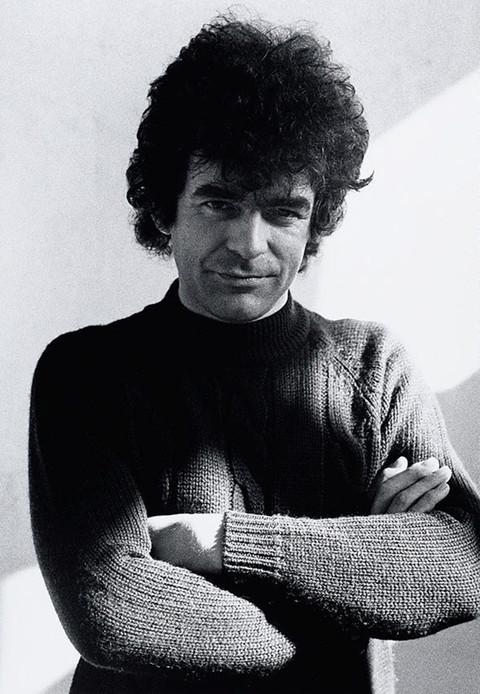This text marked Williamson’s induction into the AGDA Hall of Fame in 2010.
Most English kids when they visit their grandpas come away with memories of wet hessian bags, rusty garden tools leaning against dilapidated sheds and jars full of straightened nails.
Not so Harry Williamson. His memory is alive with fantastic figures in the sky riding chariots pulled by snorting papier maché stallions, resplendent in gaudy fairground colours, Aunt Sally booths, piles of rope quoits and smudgy but mysterious paintings of ladies with beards.
Part of Harry’s family owned and traveled with a small fairground and often stored the gear with various relatives, including Grandpa’s backyard. What a repository of images was floating around in his noggin, before he ever picked up a pencil with intent.
After a bit of freelancing around London, Harry decided to come to Australia. He had seen an exhibition of Australian design at the Design Centre in the Haymarket showing work of Gordon Andrews, Doug Annand, Alistair Morrison and others and was very impressed. Gordon was an FSIA (Fellow of the Society of Industrial Artists) and was a big deal in London.
One of his lecturers at LSPGA, Keith Cunningham, had worked for Gordon in Sydney and suggested Harry contact him. This resulted in what must have been the plum job in Australia for a young designer, and resulted in a lifelong friendship.
Gordon was by far the most celebrated Australian designer of his time, the foremost among a group of great Sydney designers, and had just started working on Australia’s stand at the 1960 Lausanne World Trade Fair. A tour de force. A magic time.
Gordon Andrews was an enigma. He was mean as catshit, or to be more polite, celtically careful with expenditure. Harry remembers once asking for a raise and Gordon berated him “That’s all you kids can think of- money, money, money, you’re learning things you don’t even know you’re learning”. He didn’t get the raise. But paradoxically he was the most generous of men professionally. He would share all the secrets he had on methodology, taking great pains to make sure Harry understood. He would introduce him later to invaluable clients, and urge them to give him a go. The Reserve Bank was one such, and Harry produced beautiful work for them. The “Mawson” $100 note and the Bicentennial commemorative $10. Two classics of banknote design.
In the eighties he hung up his shingle as “Harry Williamson Design Partnership”, and ploughed on into signage and information programs. MLC, Australian National Gallery, High Court of Australia. Currency design and production, (“Mawson” $100), and the commemorative $10 note, winner of gold, Australian Print Design Awards. Building graphics, signage standards and electronic information systems for John Hunter Hospital, Sydney’s CityRail, Singapore Mass Rapid Transport System, Sydney Airport International Terminal, University of Technology, Sydney and suburban campuses. Corporate graphics and house styles, corporate reports and publications. The scope was breathtaking. The standards riveting.
Now a gentleman of the land in Federal, Northern NSW, just a spit from Byron Bay, Harry still works for long time clients like Ivor Indyk of Giramondo Publications at his long time love, book design. And he occasionally deigns to show us all how it should be done. Witness his most recent commission (on this display). An image for the Australian Hemp Masonry Company, finished last July. A triumph of rigorous simplicity.
The lessons of the London School of Printing have stuck hard in his mind for all these years, but he’s been able to use them through the decades with a light touch. Like Les Mason he’s been able to control the most manic elements in a design, the most wayward content, with tough and talented typography. Or like some of the members of the Swiss School, that most sober of styles, who could corral errant images, like curiously cropped photographs and dancing abstractions, with the mighty discipline of Helvetica.
Harry is a masterful designer, full of power and play, full of intuitive logic. A life devoted to bringing order out of chaos. I’m sure the memories of his grandpa’s backyard were never far from the surface.
Max Robinson, 2010.
